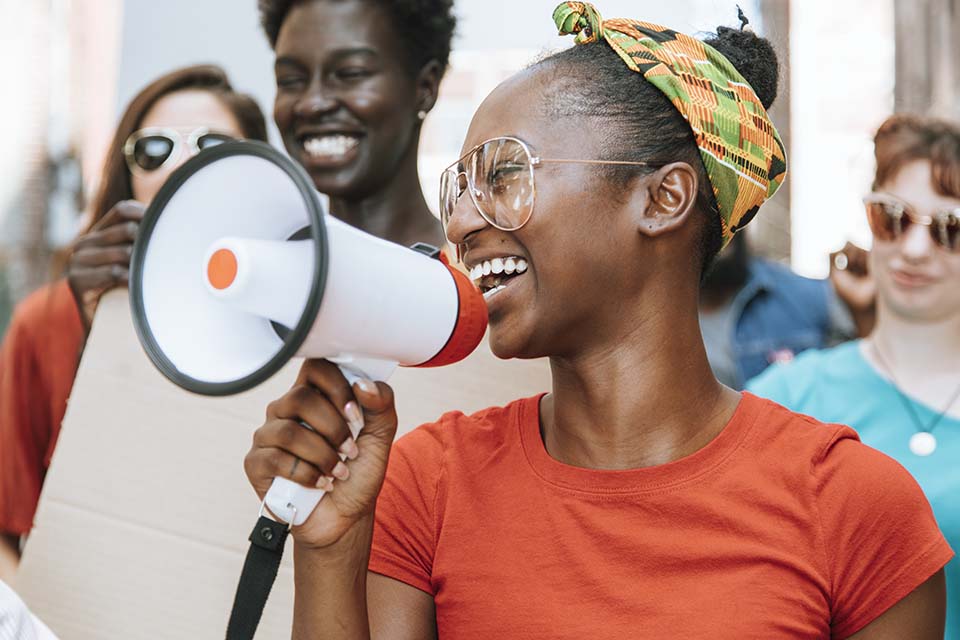The poster hanging in your local library, inviting you to join the neighborhood watch, the political activism protest marching through downtown and the Friday night high school football game—these are all examples of collective action you may see in your everyday life.
Individuals who come together with unified efforts and a common vision have the power to bring positive transformations in their communities and the world around them. The impact of collective action can create resounding change in society.
What Is Collective Action?
Collective action, also known as collective action theory, refers to a coordinated manner of action in which individuals work together to achieve a common goal. Often motivated by a desire to make a difference in their community, fight for a collective cause, or solve a unique problem, collective action can be a powerful force for social change, leading to greater outcomes than what one individual could achieve alone.
Although, collective action can prove to be a challenging phenomenon as it requires a large coordinated effort and goal-oriented thinking, demanding group members to put aside their individual interests.
Collective Action Example
The Civil Rights Movement in the United States during the mid-20th century is an example. African Americans came together to fight against segregation and discrimination through protests, boycotts and sit-ins, leading to significant legal and cultural changes.
Additional examples include labor strikes, where workers come together to demand better wages and working conditions, or the response to COVID-19, where in the face of a global health crisis, individuals, communities and governments came together to slow the spread of the virus and protect public health.
Collective Action Problems
Collective action problems, also referred to as social dilemmas and logic problems, arise when individuals are attempting to work together but can’t or won’t cooperate effectively because of their individual interests. This may be because they are driven by their own goals or desires or because they believe that others in the group will do the work for them.
As noted in Mancur Olson’s The Logic of Collective Action, the collective action problem occurs because individuals in “any group attempting collective action will have incentives to ‘free ride’ on the efforts of others if the group is working to provide public goods. Individuals will not ‘free ride’ in groups that provide benefits only to active participants.”
Real-life examples of this problem or social dilemma phenomena include the conservation of endangered species and controlling of invasive species, low voter turnout and rising healthcare costs.
Tragedy of the Commons
Tragedy of the commons classifies a situation where a shared resource is overused and depleted because individuals are acting in their own self-interest without thinking of the greater whole, which leads to a negative outcome. To resolve this tragedy, collective action is required to readjust the allocation of the resource.
For instance, overfishing can lead to the depletion of fish populations, harm marine ecosystems and disrupt the balance of ocean food chains, eventually causing ecological and economic consequences. But by instituting and enforcing fishing quotas for individual fishermen, collective action can be used to preserve the overall population.
Other collective action problems include climate change and resource depletion, pollution, water scarcity and traffic congestion.
Game Theory & Nash Equilibrium
Game theory is a useful approach for better understanding the challenges of collective action.
Game theory suggests that in the case of collective action, a Nash Equilibrium can occur because no player has an incentive to change their behavior, given the behavior of the other players. Ultimately, this creates a self-fulfilling prophecy where collective action fails because everyone assumes that others will not participate.
Prisoner’s Dilemma
The “Prisoner’s Dilemma” is a classic example of a collective action problem. An example given to illustrate the challenges an individual might face when participating in collective action, the “Prisoner’s Dilemma” describes two suspects in a crime, separated in their own holding cells and unable to communicate with each other. The police have offered both suspects the following deal: If one suspect confesses and the other remains silent, the confessing suspect will receive a lighter sentence, while the silent suspect will receive a harsher punishment. If they both confess, they will both receive moderate sentences. If both suspects remain silent, they will both receive a lesser punishment.
Illustrating the difficulties that can arise when individuals or groups act in their own self-interest rather than for the greater good, the “Prisoner’s Dilemma” is often used to explore strategies for promoting cooperation in similar situations.
Conclusion
We encourage you to use Policy vs Politics as a resource for quick access to raw data and information as you draw your own conclusions as to whether a policy, law, regulation or action aligns with your own beliefs. This will better equip you to engage in more active, knowledgeable and thoughtful dialogue.
Learn how you can connect further with us and get involved here.

